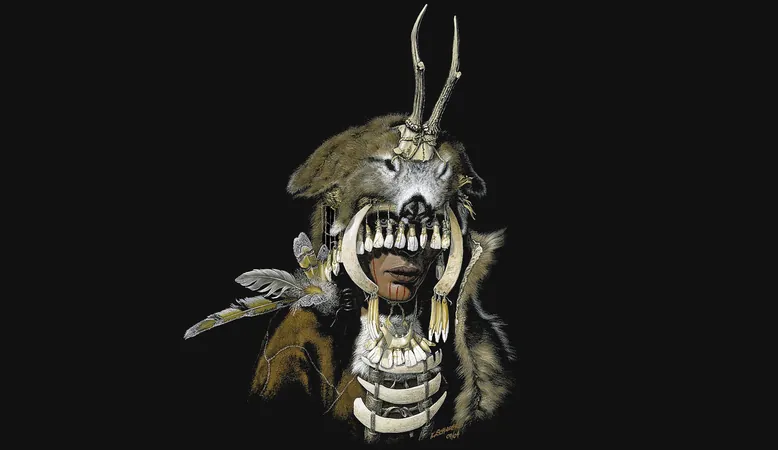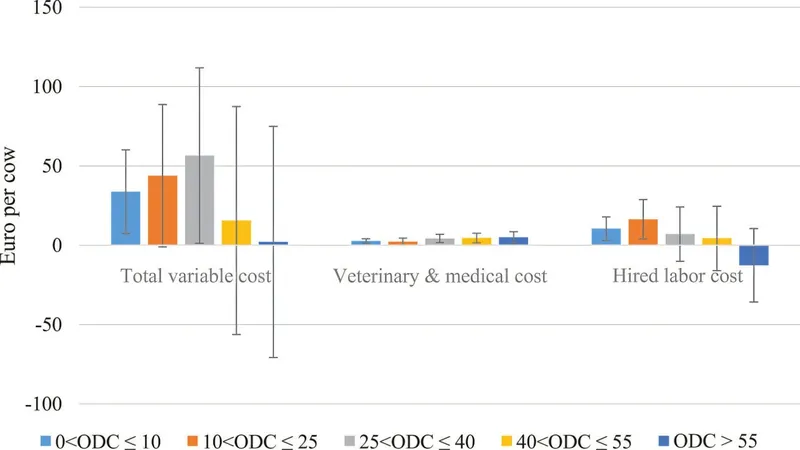
Unearthing the Mysteries of the Bad Dürrenberg Headdress: A 9,000-Year-Old Gate to the Past
2025-01-20
Author: Olivia
Unearthing the Mysteries of the Bad Dürrenberg Headdress: A 9,000-Year-Old Gate to the Past
The Bad Dürrenberg headdress, a remarkable artifact from the depths of history, provides a fascinating glimpse into the spiritual practices of prehistoric Europe. Crafted from deer antlers and boar teeth, this intricate headpiece hails from Bad Dürrenberg in Saxony-Anhalt, Germany, dating back to around 7000 to 6800 B.C.
This extraordinary headdress was discovered in 1934 amidst a lavish burial site, belonging to a woman from the Mesolithic period, a time spanning from approximately 15,000 to 5,000 B.C. The grave goods found alongside her skeletal remains hint at her potentially elevated social status—possibly that of a shaman. Remarkably, the grave was adorned with red ochre powder, a pigment often associated with rituals or burial traditions in ancient cultures.
In addition to the headdress, the grave contained a host of unique artifacts, such as a hollow crane bone likely used for storing small stone knives, a polished axe, and deer bones that served practical purposes like applying red ochre. Intriguingly, over 50 pendants made from the teeth of cows, bison, and deer were also discovered, pointing to a rich cultural practice surrounding personal adornment and possibly spiritual significance.
The woman, who was between 25 and 40 years old at her time of death, was buried with the remains of a related infant, which adds to the complexity of her story—indicating ties to family and the continuation of lineage. Notably, her skeletal structure presented an atypical shape in her cervical vertebra, a condition that may have inspired unique perceptions—perhaps contributing to her role as a spiritual healer or shaman. Such anomalies could have given her an otherworldly status within her community, as she might have experienced sensations perceived as mystical or supernatural.
Experts from the State Office for Heritage Management and Archaeology Saxony-Anhalt theorize that her headdress was adorned with various animal bones, shells, and antlers crafted into a mask, enhancing her role in shamanistic practices. These elements suggest that she might have engaged in rituals that connected her with nature and the spirit world, possibly embodying a spirit animal during her spiritual journeys.
As one of the final representatives of the Mesolithic hunter-gatherers in Europe, this shaman lived during a period that was rapidly transitioning towards agriculture and sedentism. Her existence in the dense birch forests, while following the dwindling game populations, highlights the profound changes taking place not only in her life but across the continent.
Ultimately, the woman’s demise may have resulted from a dental abscess—an infection that tragically spread, emphasizing the vulnerability of even the most revered members of ancient societies. The Bad Dürrenberg headdress, more than just a decorative piece, allows us to connect with a rich tapestry of human history, spirituality, and the evolving roles of women in prehistoric communities.
Could this long-lost shaman's wisdom still hold lessons for us today? Dive deeper into the ancient mysteries of our ancestors!









 Brasil (PT)
Brasil (PT)
 Canada (EN)
Canada (EN)
 Chile (ES)
Chile (ES)
 Česko (CS)
Česko (CS)
 대한민국 (KO)
대한민국 (KO)
 España (ES)
España (ES)
 France (FR)
France (FR)
 Hong Kong (EN)
Hong Kong (EN)
 Italia (IT)
Italia (IT)
 日本 (JA)
日本 (JA)
 Magyarország (HU)
Magyarország (HU)
 Norge (NO)
Norge (NO)
 Polska (PL)
Polska (PL)
 Schweiz (DE)
Schweiz (DE)
 Singapore (EN)
Singapore (EN)
 Sverige (SV)
Sverige (SV)
 Suomi (FI)
Suomi (FI)
 Türkiye (TR)
Türkiye (TR)
 الإمارات العربية المتحدة (AR)
الإمارات العربية المتحدة (AR)